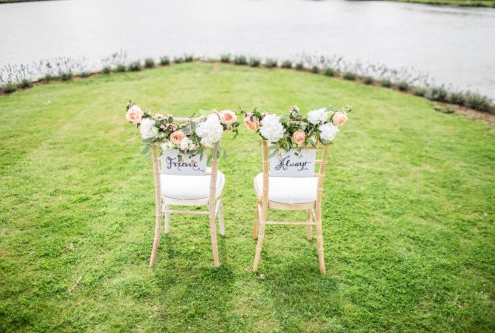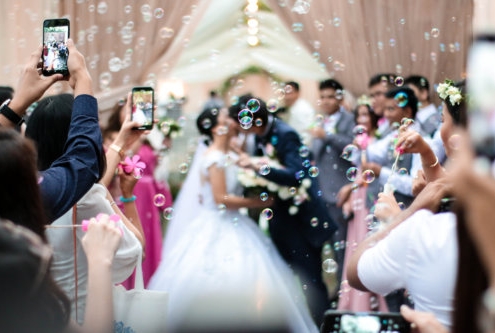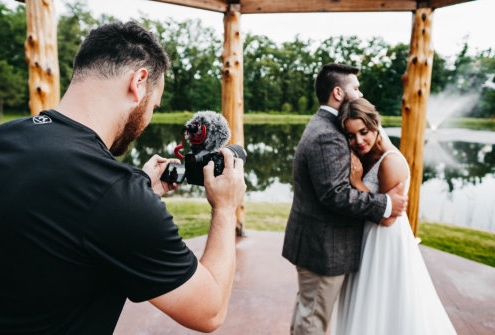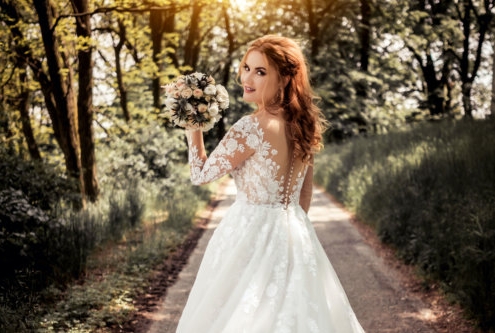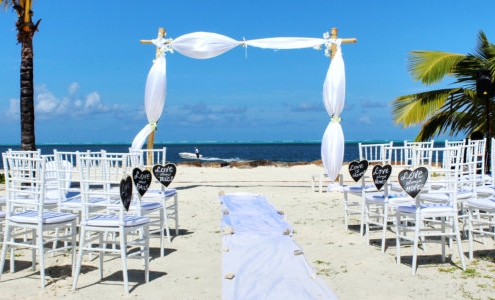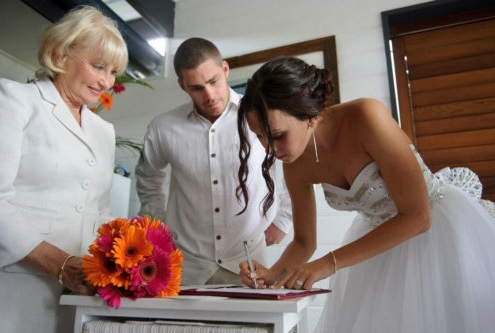Capturing Love: A Guide to Selecting the Ideal Wedding Photographer
The Importance of Choosing the Right Wedding Photographer
Selecting the right wedding photographer is a pivotal decision in the journey towards your special day. Your wedding photographs are timeless mementos that capture the essence of one of the most significant moments in your life.
A skilled photographer not only documents the event but transforms fleeting moments into lasting memories. The choice of a wedding photographer influences how you will relive your celebration for years to come, making it a decision that merits careful consideration and thoughtful evaluation.
Overview of the Guide to Selecting the Ideal Wedding Photographer
This guide aims to be your compass in navigating the intricate process of choosing the ideal wedding photographer. From understanding your personal style to evaluating potential photographers and finalizing your decision, each step is designed to empower you in making an informed choice.
Your wedding photography is a narrative of your unique love story, and this guide is crafted to ensure that the photographer you select aligns seamlessly with your vision, capturing the nuances and emotions that make your day truly unforgettable.
Understanding Your Style and Vision
A. Identifying Your Preferred Photography Style:
Traditional
Traditional photography exudes a classic and timeless feel. It involves posed shots and structured compositions, often capturing the essential moments and group portraits. If you appreciate a more formal and structured approach to photography, this style may resonate with your vision.
Photojournalistic
For those who prefer a candid and documentary-style approach, photojournalistic photography may be the ideal fit. This style focuses on capturing natural, unscripted moments, providing a storytelling element that brings the viewer into the heart of the celebration.
Fine Art
Fine art photography blends creativity with a touch of romance. This style often involves using artistic techniques, unique compositions, and creative lighting to produce visually stunning and aesthetically pleasing images. If you envision your wedding photos as pieces of art, fine art photography may be the perfect choice.
B. Aligning the Photographer’s Portfolio with Your Vision
Once you’ve identified your preferred style, closely examine the portfolios of potential photographers. Look for consistency in their work, paying attention to the storytelling, composition, and overall aesthetic. Aligning the photographer’s portfolio with your vision ensures that they can translate your unique love story into captivating images that resonate with your desired style.
C. Considering the Importance of Candid Moments
Beyond posed shots, candid moments are the heartbeat of wedding photography. These unscripted, genuine moments capture the raw emotions and joy of the day. When selecting a photographer, consider their ability to seamlessly blend into the background, capturing candid moments that add depth and authenticity to your wedding album. A skilled photographer knows how to freeze these fleeting instances, creating a collection of memories that tell the genuine story of your celebration.
Researching and Shortlisting Photographers
A. Utilizing Online Platforms and Recommendations
Start your journey by leveraging online platforms and seeking recommendations. Explore reputable wedding photography websites, social media, and online forums. Ask friends, family, or recently married acquaintances for recommendations. These sources can provide valuable insights and a starting point for building your list of potential photographers.
B. Reviewing Portfolios and Customer Reviews
Dive into the portfolios of the photographers on your list. Scrutinize their previous work to understand their style, creativity, and consistency. Simultaneously, delve into customer reviews to gain perspectives on their professionalism, responsiveness, and the overall client experience. A photographer’s track record speaks volumes about their ability to deliver the results you envision.
C. Narrowing Down Options Based on Expertise and Style
Narrow down your list by evaluating photographers based on their expertise and style. Consider their proficiency in wedding photography, particularly if they have experience with ceremonies similar to yours. Ensure that their style aligns with your preferences, as a harmonious blend of expertise and style is paramount for capturing the essence of your wedding day.
Setting and Communicating Your Budget
A. Establishing a Realistic Photography Budget
Begin by establishing a realistic budget for your wedding photography. Consider the value you place on capturing these memories and allocate funds accordingly. A well-defined budget provides clarity and helps you narrow down options without compromising on quality.
B. Understanding Package Inclusions and Additional Costs
Thoroughly review the packages offered by potential photographers. Understand what each package includes, from pre-wedding shoots to post-production services. Additionally, be aware of any potential additional costs, such as travel expenses or extra hours of coverage. A transparent understanding of package details ensures alignment with your expectations.
C. Communicating Budget Expectations with Potential Photographers
Openly communicate your budget expectations with potential photographers during your initial discussions. This transparency allows for constructive conversations and ensures that both parties are on the same page. It also provides an opportunity for photographers to tailor their services to meet your budget while delivering exceptional results.
Meeting and Interviewing Potential Photographers
A. Scheduling In-Person or Virtual Meetings
Once you’ve shortlisted photographers, schedule in-person or virtual meetings to get to know them better. This personal interaction is crucial in assessing their personality, communication style, and overall compatibility. Use this time to discuss your vision and gauge their enthusiasm for capturing your special day.
B. Discussing the Photographer’s Approach and Experience
Engage in discussions about the photographer’s approach to weddings and their overall experience. Inquire about their style, the techniques they use to capture moments, and their ability to adapt to different settings. A seasoned photographer with a compatible approach enhances the likelihood of a seamless collaboration.
C. Clarifying Expectations, Timelines, and Any Special Requests
Clearly articulate your expectations, including the desired timeline for photography services and any special requests you may have. This ensures that both parties are aligned on critical details, preventing misunderstandings down the line. Discussing expectations early on fosters a collaborative and communicative relationship.
Checking for Flexibility and Adaptability
A. Confirming Availability for the Wedding Date and Potential Challenges
Ensure that your preferred photographer is available on your wedding date. Additionally, discuss potential challenges such as weather conditions or unexpected delays.
Confirm that the photographer has contingency plans in place to navigate unforeseen circumstances.
B. Assessing the Photographer’s Ability to Adapt to Different Settings and Lighting Conditions
Assess the photographer’s adaptability by discussing their experience in various settings and lighting conditions. A versatile photographer can navigate diverse environments, ensuring that your wedding moments are beautifully captured, regardless of the challenges presented by the venue or lighting.
C. Discussing Contingency Plans for Unexpected Circumstances
Inquire about the photographer’s contingency plans for unforeseen circumstances, such as equipment failure or unexpected events. A reliable photographer should have backup strategies in place to address any challenges that may arise during the wedding day.
Evaluating Equipment and Backup Plans
A. Inquiring About the Photographer’s Camera Gear and Equipment
Gain insight into the photographer’s technical capabilities by inquiring about their camera gear and equipment. A professional photographer invests in high-quality tools that contribute to the clarity and excellence of the final images. Understanding their equipment ensures confidence in their ability to deliver top-notch results.
B. Discussing Backup Plans for Equipment Failure or Unforeseen Issues
Address the potential for equipment failure or unforeseen issues by discussing the photographer’s backup plans. A responsible photographer should have contingency measures in place, such as additional equipment and backup photographers, to ensure a seamless photography experience on your wedding day.
C. Ensuring the Photographer Has a Comprehensive Understanding of the Venue
Confirm that the photographer has a comprehensive understanding of your chosen venue. Familiarity with the location enables them to identify optimal shooting spots, anticipate lighting conditions, and plan for unique opportunities. A photographer who knows the venue well can navigate the space with confidence, resulting in captivating images.
Understanding the Contract and Terms
A. Reviewing the Photographer’s Contract in Detail
Before finalizing your decision, thoroughly review the photographer’s contract. Pay close attention to terms, conditions, and any fine print. A well-crafted contract outlines expectations, services, and responsibilities, providing clarity and transparency in your professional relationship.
B. Clarifying Copyright and Usage Rights
Discuss copyright and usage rights with the photographer to ensure a clear understanding of how you can use and share the images. Knowing the parameters of usage rights prevents any potential conflicts and ensures that you can enjoy and share your wedding photos as desired.
C. Discussing Payment Schedules and Cancellation Policies
Understand the photographer’s payment schedule and cancellation policies. Clarify when payments are due and the consequences of cancellations or changes to the agreed-upon terms. A clear understanding of financial and contractual aspects contributes to a smooth and transparent working relationship.
Each aspect, from research and budgeting to personal interactions and contractual details, plays a pivotal role in ensuring that your wedding day is beautifully captured and preserved for a lifetime of cherished memories.


